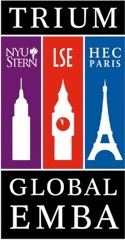a service orientation in your company: measurable?
 Sunday, September 13, 2009 at 7:55PM
Sunday, September 13, 2009 at 7:55PM Daniela Guido asked a great question on CEM Professionals on LinkedIn. Here are my thoughts on the issue she raised (and it's an issue her company deals with all the time as they help their international clients).
Ultimately the question for a company is whether the service culture generates greater perceived value for the customer, at a profit, so there are two different sets of KPIs here.
perceived customer value (PCV)
The metrics that drive PCV are not just about efficiency, nor about effectiveness, but include another set of dimensions that ultimately revolve around whether the service event (whether outbound sales or inbound service or service recovery) handle moments of truth for the customer or the brand, and in ways that reflect the variability of the customer's TYPE and OBJECTIVE.
Culture, frankly, is a huge determinant of what defines the customer's objective in service recovery. The objective for a service recovery in South Korea or China, for example, varies from the objective in Canada or France.
A person's type shapes how they respond to moments of truth. Check out DISC assessments and Myers Brigg for some general approaches to assessing customer types and to craft response strategies for service failures.
what's effective service?
As for whether the service process is effective or efficient depends on how you define effective. The emotional intelligence of service recovery adds a variable or two to the optimization problem; in China, we did a study with Ping An that showed a huge improvement in customer sat just by having CSRs listen longer. Is that efficient? No. Is it effective? It is if customer satisfaction is the goal; but not if you narrowly define "effective" as being merely "solving the problem that is the proximate cause of the call."
Finally, as to profitability, this is a big challenge in both micro- and macro- perspectives. You want enough service coverage to provide a level of service that meets or exceeds expectations - but that does not necessarily mean short wait times. Whether a customer gets a human being, for example, may be more important than how long they waited.
perceived wait time: reframing service perception with clever channel choice
The case of Amazon.com also shows that people PERCEIVE a shorter wait time when they ask for a callback through the website than if they called into the call center and waited online. So, the right mix of staffing, process design and channel can help a company control costs in the pursuit of an overall great customer experience.
And of course if you have the right staff, and they are well trained, have the right personality profile, and are in the right culture where they have the tools and values to deal with customer issues - ideally on first call - you've got a great formula that's likely to retain your best employees, lowering your internal costs.
One final note: if improved customer engagement flowing from great interactions with call centers yields improved total lifetime customer value, this increases company profitability.




Reader Comments